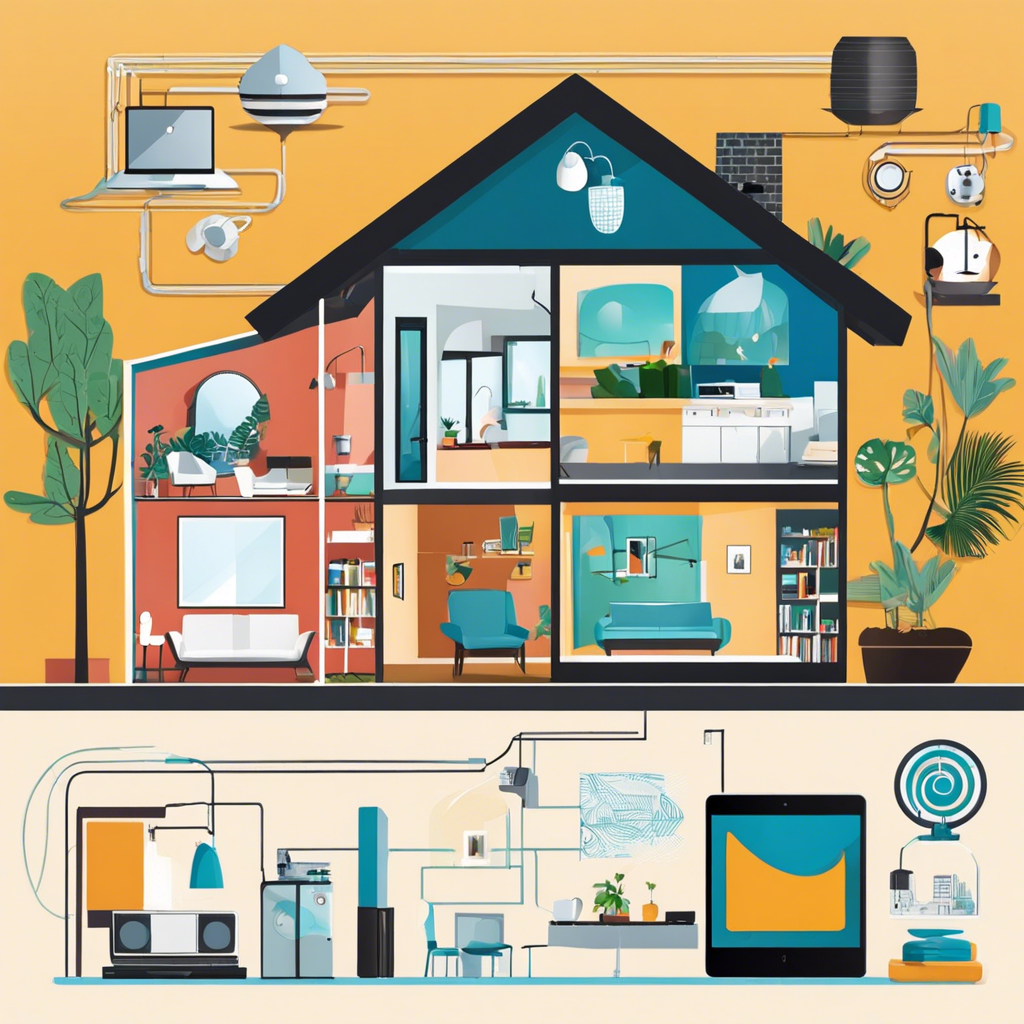The concept of a smart home, once a futuristic fantasy, is now an attainable reality for many homeowners thanks to the Internet of Things (IoT). With a few simple DIY projects, you can transform your home into a connected haven, offering convenience, control, and enhanced security, all manageable from the comfort of your smartphone, no matter where you are in the world.
So, where to begin? The first step is to identify the aspects of your home you want to make ‘smart’. This could include lighting, security, temperature control, or even automating certain tasks. There is a vast array of smart devices on the market, from smart plugs and light bulbs to more complex systems like automated blinds and voice-activated assistants. The beauty of a DIY smart home is that you can start small and gradually build up your system, choosing products that fit your budget and needs.
For those just starting, smart plugs and bulbs are an easy and affordable way to dip your toes into the world of connected devices. With these, you can control your lighting and appliances remotely, and even set schedules to turn them on and off, creating a deterrent when you’re away from home. Many of these devices can be controlled via a central hub or a voice assistant, like Amazon Echo or Google Home, allowing for easy and centralized control.
Another essential aspect of a smart home is security. DIY-ers have the option to install their own security cameras, video doorbells, and motion sensors, all of which can be monitored remotely. Receive alerts when someone is at your door, keep an eye on your pets while you’re at work, or simply check that you turned the stove off – modern security systems offer peace of mind and an extra pair of eyes when you need them.
For the energy-conscious, smart thermostats offer an efficient way to control your home’s temperature and reduce energy costs. These thermostats can be controlled remotely and can even learn your habits, automatically adjusting the temperature to your preferences. Some can also provide energy usage reports, helping you identify areas where you can cut down on power consumption.
The beauty of a DIY smart home is that it can be tailored to your unique needs and preferences. With a vast ecosystem of devices and systems available, the possibilities are endless for creating a connected, efficient, and secure living space. So, whether you’re looking to improve security, save energy, or simply enjoy the convenience of controlling your home from your smartphone, a DIY smart home is an exciting and achievable project.
One of the key advantages of a DIY smart home setup is the ability to customize and expand your system over time. Perhaps you start with a basic smart lighting system and then decide you want to add in temperature control or security cameras. The flexibility of DIY means you can gradually build and adapt your setup, choosing the best devices and systems for your personal preferences and budget.
When it comes to setting up your smart home, there’s an array of protocols and standards to be aware of. Ensuring your devices are compatible and can communicate with each other is key to a successful setup. So, before you buy, do your research to understand the different protocols and whether your chosen devices will play nicely together. Some of the most common protocols include Z-Wave, Zigbee, Wi-Fi, and Bluetooth, and many devices will support multiple protocols, increasing their compatibility.
While the world of IoT and smart homes is exciting, it’s important to stay vigilant about security. As you add more connected devices to your home, you increase the potential attack surface for malicious actors. Ensure you follow best practices for security, such as regularly updating device firmware, using strong and unique passwords, and enabling two-factor authentication where possible. By staying security-conscious, you can enjoy the benefits of a smart home with peace of mind.
In summary, creating a DIY smart home is an exciting project that offers homeowners convenience, control, and peace of mind. With a vast array of devices and systems available, it’s now easier than ever to build a connected home that suits your unique needs and budget. Whether you’re looking to improve security, save energy, or simply automate everyday tasks, the world of IoT has something for everyone. So, start planning your smart home transformation and enjoy the power of managing your home from anywhere.
